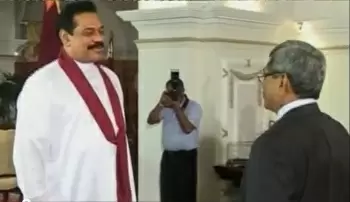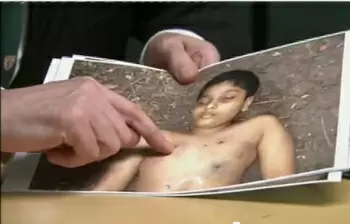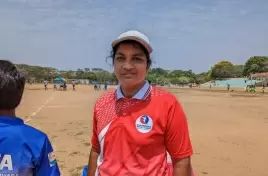The truth behind India’s dilemma with UN Resolution On Lanka

15-March-2012
Vol 3 | Issue 11
Sri Lankan war crimes and India’s refusal to support the US-sponsored watered down resolution censoring Colombo at the UN Human Rights Commission meeting in Geneva in spite of the majority of members cutting across party line supporting it rocked both the Houses of Parliament as the 2012 budget session began.
Finance minister Pranab Mukherjee was forthright, saying India was opposed to country specific resolution while external affairs minister SM Krishna spoke of India’s concern for the wellbeing and welfare of the Tamils in Sri Lanka, exposing total lack of understanding of the history of Tamils in our neighbouring country and our own country’s policy towards its neighbour.
 |
|
Countdown begins, now: The US backed resolution on Sri Lanka at UNHRC has set alarm bells ringing in Colombo (Photos courtesy: Channel 4)
|
Though Tamils and Sinhalese lived as two separate nations for more than two millenia, the British merged the two into an unitary state in the 19th century and departed in 1948, handing over power to the Sinhalese, who constitute about 75 per cent of the population, and since then, all the Prime Ministers and Presidents of the country have been Sinhalese only.
Dudley Senanayake, the first Prime Minister representing the United National Party, considered to be the father of the nation, had said: “We (Sinhalese) are one blood and one nation. We are the chosen people. The Buddha said that this religion would last 5,500 years. That means we, as the custodians of that religion, shall last long.”
SWRD Bandaranaike, representing the Sri Lanka Freedom Party who became Prime Minister in 1956, had said: “I am prepared to sacrifice my life for the sake of my community, the Sinhalese. (And he did.) If anybody were to try to hinder our progress, I am determined to see that he is taught a lesson he will never forget.” The Tamils are still reeling under the lesson he taught.
JR Jayawardene, the first executive President of Sri Lanka, had said: “I am not worried about the opinion of the Jaffna (Tamil) people. We cannot think of them, not about their lives or their opinions. The more you put pressure in the north, the happier the Sinhalese people will be. Really if I starve the Tamils out, the Sinhala people will be happy.”
Jayawardene did try to starve the people of Jaffna by cutting off food supplies to the peninsula at one stage which forced Rajiv Gandhi, then Prime Minister of India, to send an Armada of fishing boats loaded with essential supplies, to Jaffna.
It was thwarted by the Sri Lankan Navy, leading to Indian Air Force airdropping the supplies. According to President Mahinda Rajapaksa, who is facing charges of war crimes and genocide of Tamils, “there are no majority or minority communities in Sri Lanka. There are only patriots and traitors.” No prize for guessing who the traitors are in Rajapaksa’s opinion. Our policy makers in New Delhi should keep in mind this deep linguistic divide in Sri Lanka.
Coming back to the Geneva resolution. The UN Secretary-General, after a visit to Sri Lanka post annihilation of the LTTE in the summer of 2009, appointed a panel of experts to study war crimes and the allegations of widespread use of torture and other cruel inhuman or degrading treatment of Tamils in the custody of the military and the police in the aftermath of the Eelam war.
The study accused the government forces of deliberately shelling civilians in ‘no fire zones’ and killing tens of thousands of people in the final days of the war and recommended a detailed investigation.
To preempt such investigation, Rajapaksa, the main accused of war crimes, appointed the Lessons Learnt and Reconciliation Commission. The LLRC has been deeply flawed from its outset and has not been able to produce any credible or constructive recommendations.
Even the few recommendations it made remain unimplemented. For three years, Rajapaksa has been fooling the international community by claiming that thousands of war-displaced have been rehabilitated, which is only on paper. The Northern and the Eastern Provinces, traditional homeland of the Tamils have been fully militarised since the end of the war, spreading terror among the civilians.
Sri Lanka’s human rights record came up for severe criticism at the Geneva meeting of the UNHRC. The US announced that it would support a very straightforward resolution that the government of Sri Lanka has not yet done enough to implement the recommendations of the LLRC and comprehensively address the question of accountability. That was enough to send Rajapaksa and his henchmen into a tizzy.
Why is India so afraid of supporting such an innocuous resolution the USA is sponsoring? Because, the 25-year-old war against the LTTE was not fought by Sri Lanka alone.
Taking advantage of the political innocence of Rajiv Gandhi, the Indian Peace Keeping Force sent to Sri Lanka to help implement the Indo-Sri Lanka Agreement of 1987, was made use of by President Jayawardene to fight the LTTE, struggling for political freedom of the Tamil people in Sri Lanka.
Though the LTTE was down by the time the Indian troops were withdrawn in 1989, it was by no means out. Intermittent fighting between the LTTE and the Sri Lankan armed forces continued with neither side able to score a decisive victory. Norway entered the scene meanwhile and brokered a peace agreement in 2002 but Colombo was dragging its feet in arriving at any political settlement.
The coming to power of the UPA in 2004 brought about a sea change in Sri Lanka’s war against the LTTE. A study by the Norwegian government about its failed peace mission in Sri Lanka released in November last reveals how a clutch of Mallus who had wormed their way to key positions in the Indian government, conspired to sabotage the peace efforts and gave new confidence to the Sri Lankan armed forces to take on the LTTE, hitherto considered invincible.
MK Narayanan, who was the national security adviser to the UPA government, suffered a guilty conscience for not saving Rajiv Gandhi from the LTTE human bomb, which he could have easily done if only he took timely action on an intercepted military intelligence report about the assassination plot passed on to him in his then capacity as IB chief.
He safely filed the report. Instead, he manipulated to get Shivshankar Menon elevated as foreign secretary, superseding 14 competent officers senior to him and helped evolve a new Sri Lankan policy of pretending to help the Tamils and extending all military support to annihilate the LTTE.
 |
|
The search has now begun for the 'Indian hand' in the murder of Tamils
|
Lt.-Gen. Satish Nambiar, another Mallu, was deputed as military adviser to Rajapaksa, and his brother Vijay Nambiar was posted to the UN to act as an adviser to the UN Secretary-General.
T Kutty Ayyappan Nair was posted as the principal secretary to the Prime Minister, forming the anti-Tamil Mallu axis. Anthropologically, the Sinhalese share common traits with the people of Kerala who share a congenital hatred for the Tamil race.
The Norway report says with the Congress coming to power in 2004, India offered radar services to Colombo and improved its electronic and other surveillance systems. Quoting a senior Mallu diplomat, the report says, “We did not want Indian bullets used against Tamils, so we encouraged Sri Lanka’s military purchases from China so as not to alienate Rajapaksa.”
Claiming the war was led by “Indian silence,” the report says, “India walked a fine line between showing concern for the plight of the Tamils stuck in the war zone while supporting the defeat of the LTTE and preserving its ties with the Sri Lankan government.”
Erik Solheim, Norway’s chief peace negotiator, who claims to have easy access to Indian intelligence, says: “Never, ever did any Indian official hint that a military victory was possible until mid-2008. Then they started, I mean I observed the change in Narayanan and others, gradually shifting to the position that may be, still may be only, that the government can wipe out the Tigers militarily. Before that, no one thought it was possible.”
If what the Norway report says and Solheim implies are true, New Delhi has much to answer about and bear partial responsibility for the serious war crimes levelled against Rajapaksa.
Sam Rajappa is Consulting Editor of The Weekend Leader
Also Read
TNA MPs conspicuous by their absence in Geneva














